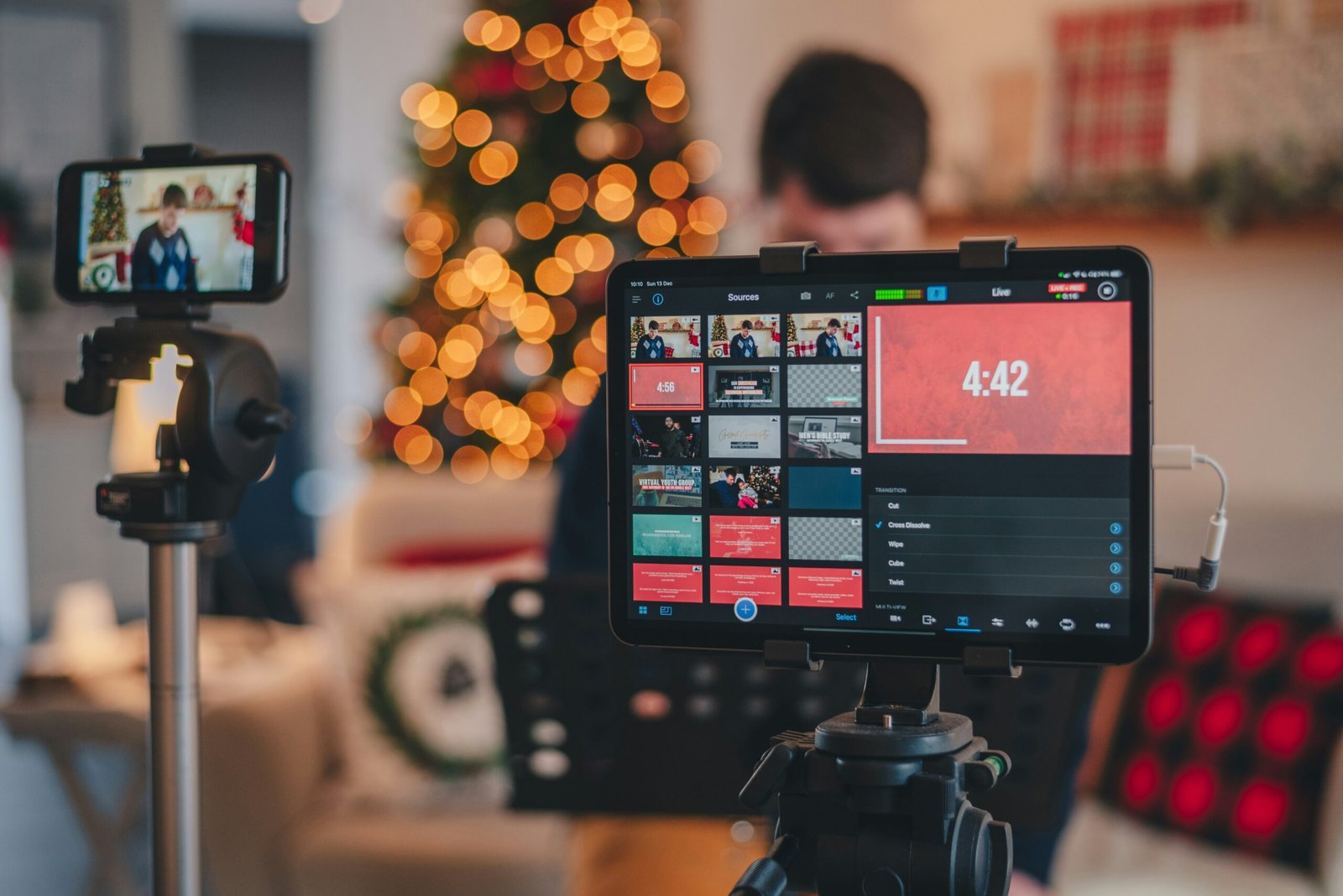
The Digital Age Trends Shaping the Fashion Industry
The fashion industry has always been known for its ability to adapt and evolve with the times. In recent years, the digital age has brought about a significant transformation in the way fashion is consumed, produced, and marketed. This shift has given rise to several trends that are reshaping the industry as we know it. In this article, we will explore three key trends in the digital age: virtual runways, social media influence, and the rise of influencer designers.
One of the most prominent trends in the digital age is the emergence of virtual runways. With advancements in technology, fashion brands are now able to showcase their collections in a virtual setting, eliminating the need for physical fashion shows. Virtual runways offer a range of benefits for both brands and consumers. For brands, it allows them to reach a global audience without the limitations of physical location. They can create immersive experiences that bring their designs to life in a way that traditional runways cannot. For consumers, virtual runways provide the opportunity to experience fashion shows from the comfort of their own homes, making high-end fashion more accessible than ever before.
Another trend that has gained significant traction in the digital age is the influence of social media on the fashion industry. Platforms like Instagram, TikTok, and YouTube have become powerful tools for fashion brands to connect with their audience and market their products. Social media influencers have become a driving force in shaping consumer trends and preferences. With millions of followers, these influencers have the ability to make or break a brand’s reputation. They can introduce new styles, promote sustainable fashion, and even collaborate with brands to create their own collections. The influence of social media has democratized the fashion industry, giving rise to new voices and perspectives.
In addition to social media influencers, the rise of influencer designers has also become a significant trend in the digital age. Influencers who have built their personal brand and gained a loyal following often venture into designing their own fashion lines. These influencer designers leverage their online presence to promote and sell their collections directly to their followers. This trend blurs the line between traditional fashion designers and influencers, creating a new breed of creative entrepreneurs. Influencer designers bring a fresh perspective to the industry, often incorporating their unique personal style and catering to niche markets that may have been overlooked by mainstream fashion brands.
In conclusion, the digital age has brought about a wave of trends that are reshaping the fashion industry. Virtual runways, social media influence, and the rise of influencer designers are just a few examples of how technology and digital platforms have transformed the way fashion is consumed, produced, and marketed. As the industry continues to evolve, it will be interesting to see how these trends develop and what new innovations will emerge in the future. Emerging designers who may not have the resources to organize a traditional fashion show can now showcase their talent on virtual runways. This opens up new opportunities for them to gain recognition and establish their brand in the fashion industry. With just a few clicks, their collections can be viewed by fashion enthusiasts, buyers, and influencers from all around the world.
Furthermore, virtual runways offer a more sustainable approach to fashion shows. The fashion industry has long been criticized for its environmental impact, with the production and transportation of physical runway shows contributing to carbon emissions. By transitioning to virtual platforms, designers can significantly reduce their carbon footprint and contribute to a more eco-friendly industry.
In addition to being accessible and sustainable, virtual runways also provide a space for innovation and experimentation. Designers can now explore new ways to present their collections, incorporating interactive elements and engaging storytelling techniques. For example, they can create virtual environments that reflect the inspiration behind their designs or collaborate with artists to add a multidisciplinary aspect to their shows.
Moreover, virtual runways allow for greater inclusivity and diversity in the fashion industry. Traditional runway shows have often been criticized for their lack of representation, with limited opportunities for models of different body types, ethnicities, and genders. Virtual runways break down these barriers by providing a platform where designers can showcase a diverse range of models, celebrating beauty in all its forms.
As virtual runways continue to evolve, there is also the potential for new revenue streams for designers. Virtual fashion shows can be monetized through partnerships with brands, sponsorships, and collaborations with technology companies. Additionally, virtual showrooms can be created where viewers can directly purchase the showcased designs, creating a seamless shopping experience.
In conclusion, virtual runways have revolutionized the fashion industry by making fashion shows more accessible, sustainable, inclusive, and innovative. They have expanded the reach of designers, providing a global platform for them to showcase their creativity and connect with a wider audience. As technology continues to advance, virtual runways will undoubtedly play a significant role in shaping the future of the fashion industry. This seamless integration of social media and e-commerce has revolutionized the way consumers shop for fashion. With just a few taps on their smartphones, users can browse through a curated feed of products, read reviews, and make purchases without ever leaving the app.
Furthermore, social media has democratized the fashion industry, giving aspiring designers and fashion enthusiasts a platform to showcase their creativity and gain recognition. In the past, breaking into the fashion industry required connections and resources that many individuals simply did not have. However, with the advent of social media, anyone with a smartphone and an eye for style can share their designs and build a following.
The influence of social media on fashion extends beyond individual consumers and brands. Fashion weeks and runway shows, once exclusive events reserved for industry insiders, are now accessible to a global audience through live streams and social media coverage. Designers can reach a much wider audience and generate buzz around their collections by sharing behind-the-scenes content, runway footage, and interviews with influencers and celebrities.
Additionally, social media has given rise to a new form of fashion journalism and criticism. Bloggers and influencers now have the power to shape public opinion and influence the way fashion is perceived. They provide in-depth reviews of collections, share their thoughts on trends, and offer styling tips to their followers. This has challenged traditional fashion media outlets and created a more diverse and inclusive landscape of fashion coverage.
However, the influence of social media on the fashion industry is not without its drawbacks. The constant pressure to create and maintain a picture-perfect image can take a toll on the mental health of influencers and consumers alike. The rise of fast fashion, fueled by the demand for trendy and affordable clothing, has also led to environmental concerns and ethical issues within the industry.
In conclusion, social media has undeniably transformed the fashion industry, giving rise to a new generation of influencers, changing the way consumers shop, and democratizing access to the world of fashion. While there are both positive and negative aspects to this digital revolution, it is clear that social media will continue to play a significant role in shaping the future of fashion. This shift in the fashion industry has been fueled by the power of social media. Influencer designers have built a loyal following on platforms like Instagram and YouTube, where they share their personal style and fashion tips. Through these channels, they have established themselves as trusted authorities in the fashion world, gaining the attention and admiration of millions of followers.
With their large and engaged audience, influencer designers have a built-in customer base for their fashion lines. They have the ability to directly reach their followers and promote their collections, bypassing traditional advertising channels. This direct line of communication allows them to receive instant feedback and make adjustments to their designs based on the preferences of their audience.
In addition to launching their own fashion lines, influencer designers often collaborate with established brands. These collaborations are mutually beneficial, as the influencer designer brings their unique perspective and personal brand to the table, while the brand gains access to a new audience and increased visibility. This trend of collaborations has become increasingly popular in the industry, with influencers partnering with both high-end luxury brands and more affordable fast-fashion retailers.
However, the rise of influencer designers has not been without its challenges. Critics argue that the fashion industry is becoming too saturated with influencer-led brands, resulting in a lack of originality and a focus on quantity over quality. Additionally, there are concerns about the ethical implications of influencer marketing, with questions raised about transparency and authenticity.
Despite these challenges, the rise of influencer designers shows no signs of slowing down. Their ability to connect with their audience, bring fresh perspectives, and challenge traditional norms has made them a force to be reckoned with in the fashion industry. As social media continues to evolve and influence consumer behavior, it will be interesting to see how influencer designers shape the future of fashion.

